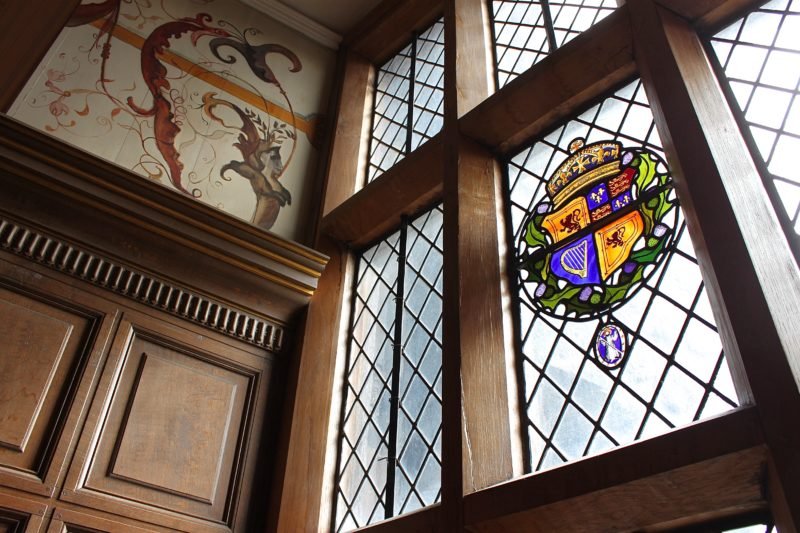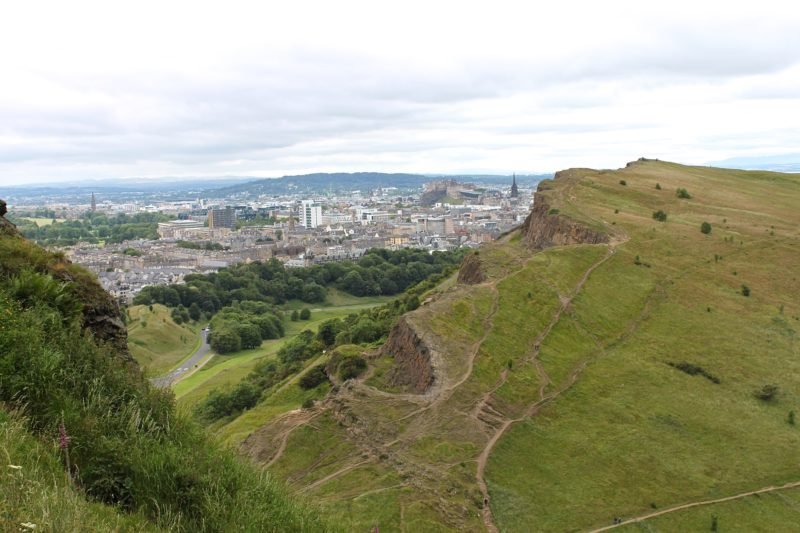EDINBURGH MUST SEES
Scotland’s capital is such a unique city, with medieval and gothic charm. History is felt as Edinburgh Castle looms over the city, hills like Arthur’s Seat and Calton Hill offer sweeping views, and Holyrood House reminds you of the presence of royalty. I highly recommend visiting this wonderful city (specifically in the summer when the weather is most temperate!) Here are some of the sights that you simply cannot miss:
Edinburgh Castle
Edinburgh Castle was once a military fortress, a royal residence, and a prison of war. Though parts of it remain in military use, it is best known today as an iconic landmark of the city’s skyline as it sits on Castle Rock, and a popular visitor sight. With that in mind, it is important to purchase tickets in advance. Do not miss the Stone of Destiny, used for centuries to inaugurate monarchs. In 1296, King Edward I of England took the stone from the Scots, and in 1996 it was finally officially returned to Scotland and is on display at Edinburgh Castle. Fun fact: the castle is the most besieged place in Britain.
inside Edinburgh Castle
St. Giles’ Cathedral
Another landmark of Edinburgh is St Giles’ Cathedral, which was founded in 1124 by King David I. In the 16th century, it most notably became the focal point of the Scottish Reformation, and is now considered the Mother Church of World Presbyterianism. While St. Giles’ is a working church first, it welcomes visitors from all over! No need to buy tickets in advance, and anything you decide to give is donation based. To take photos within the cathedral, you will need to obtain a photography permit, which you can get upon arrival.
St. Giles’ Cathedral
Old Town
You will find both Edinburgh Castle and St. Giles’ Cathedral in Old Town, a bustling and packed part of the city that is replete with tourists. Walk the Royal Mile, where you will pass centuries-old buildings sprinkled among pubs, restaurants, and souvenir shops (if you are looking for a cashmere anything, you are in luck).
Old Town
Dean Village
To get away from the crowds, head over to Dean Village. This small part of Edinburgh is quiet, residential, and scenic. As Dean Village was once an area where milling took place, you will stumble upon many millstones and stone plaques with baked breads and pies. Walk these side streets to see for yourself!
Dean Village
Arthur’s Seat
Arthur’s Seat is an extinct volcano and is considered to be the main peak of the group of hills that make up most of Holyrood Park. There are a couple of ways to hike up to the top, one of them being an easier ascent from the east above Dunsapie Loch (which CJ and I only noticed after we took a bunch of windy stone steps to the top and then looked down.) It is quite blustery at the top, but the gorgeous views of the city are unparalleled.
walking up Arthur’s Seat
Calton Hill
If you would like to see the city from above but Arthur’s Seat seems too ambitious, Calton Hill is a nice option. Actually from the top of Calton Hill, you can look out and see Arthur’s Seat as well as Princes Street in New Town and the Royal Mile in Old Town. On the hill itself, you can see some important landmarks of the city, such as the National Monument inspired by the Parthenon in Athens and the Nelson Monument shaped like an up-turned telescope.
Palace of Holyrood House
Also known as Holyrood Palace, the Palace of Holyroodhouse is the official residence of the British monarch in Scotland. In fact, when CJ and I were in Edinburgh, it happened to be Royal Week, and Queen Elizabeth II was staying in the palace! According to legend, King David I was out hunting when he saw a vision of a stag with a glowing cross between its antlers. Taking this to be a message from God, he had an abbey built on the very same spot in 1128. “Holy Rood,” the name of the Abbey and then of the Palace, means “Holy Cross.”
Holyrood Palace





